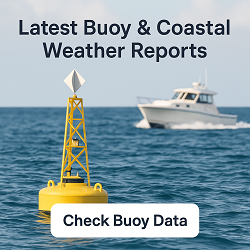Bumpass, VA Weather Forecast and Current Conditions (23024)
Current Conditions From Nearby Local Station

Feels Like 54°F
at
Current Conditions From Nearby Local Station

Feels Like 54°F
at
Point Forecast at a Glance







This Date in Weather History
1638 - The journal of John Winthrop recorded that a mighty tempest struck eastern New England. This second severe hurricane in three years blew down many trees in mile long tracks.
More on this and other weather history
Bumpass 7 Day Weather Forecast Details
Sunday Oct 5

Day: Patchy fog before 10am. Sunny, with a high near 78. South wind around 2 mph.

Night: Mostly clear, with a low around 54. South wind around 2 mph.
Monday Oct 6

Day: Patchy fog between 7am and 10am. Sunny, with a high near 79. South wind 0 to 3 mph.

Night: Mostly clear, with a low around 57. South wind around 3 mph.
Tuesday Oct 7

Day: Mostly sunny, with a high near 80.

Night: Showers and thunderstorms likely after 8pm. Mostly cloudy, with a low around 63. Chance of precipitation is 60%.
Wednesday Oct 8

Day: Rain showers likely before 2pm, then a chance of showers and thunderstorms. Mostly cloudy, with a high near 72. Chance of precipitation is 60%.

Night: A chance of showers and thunderstorms before 8pm, then a slight chance of showers and thunderstorms between 8pm and 2am. Partly cloudy, with a low around 49. Chance of precipitation is 30%.
Thursday Oct 9

Day: Sunny, with a high near 66.

Night: Partly cloudy, with a low around 46.
Friday Oct 10

Day: Mostly sunny, with a high near 67.

Night: Partly cloudy, with a low around 50.
Saturday Oct 11

Day: Mostly sunny, with a high near 71.
Sun & Moon Monthly
Sunrise 7:11 AM
Sunset 6:49 PM
Last Light 7:15 PM
Moonset 5:17 AM

Contiguous United States Extremes
Sat's High Temperature
98 at Rio Grande Village, TX
Sat's Low Temperature
24 at 19 Miles Northeast Of Kirk, OR
Weather Folklore
Sap from the maple tree flows faster before a rain shower.
Current subscribers - login to your ClearSky account
About Bumpass, Virginia
Bumpass is an unincorporated community in Louisa County, Virginia, United States. Its post office is still in service. National Historical Places registered in Bumpass include the Duke House and Jerdone Castle. The latter is a plantation (now lakefront) where George Washington spent the night on June 10 during his 1791 Southern tour.
The community was named for John T. Bumpass, one of the first postmasters in the area. The surname "Bumpass" in turn derives from the French bonpass, meaning "good passage".
Content from Wikipedia, licensed under CC BY-SA 3.0.
How We Provide Better Local Weather
Current conditions: We use the nearest available station to your location - including professional MESONET/MADIS and local weather stations - often miles closer than regional airports.
Forecasts: National Weather Service point forecasts predict for your specific area, not broad regional zones, making them far more relevant to your location.

